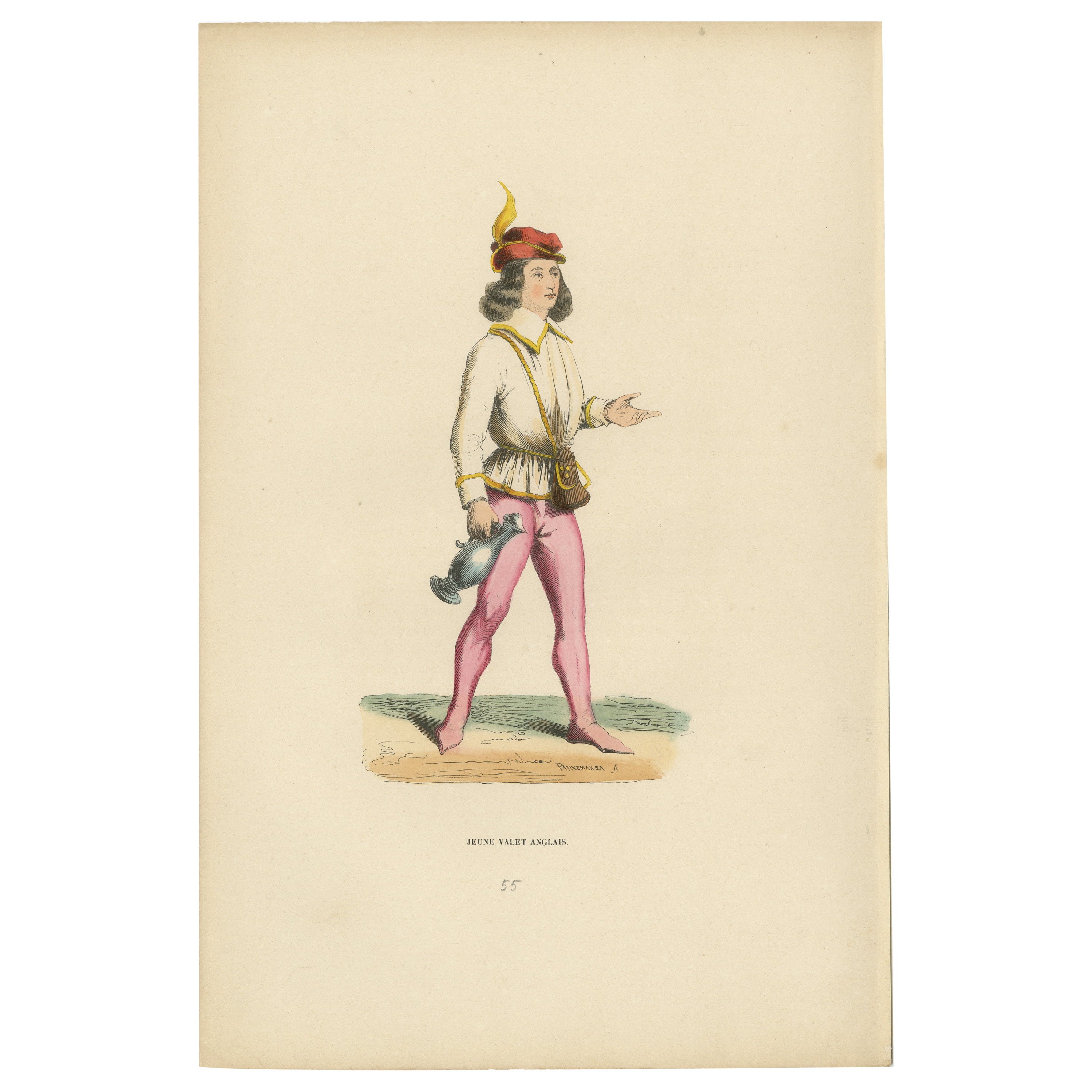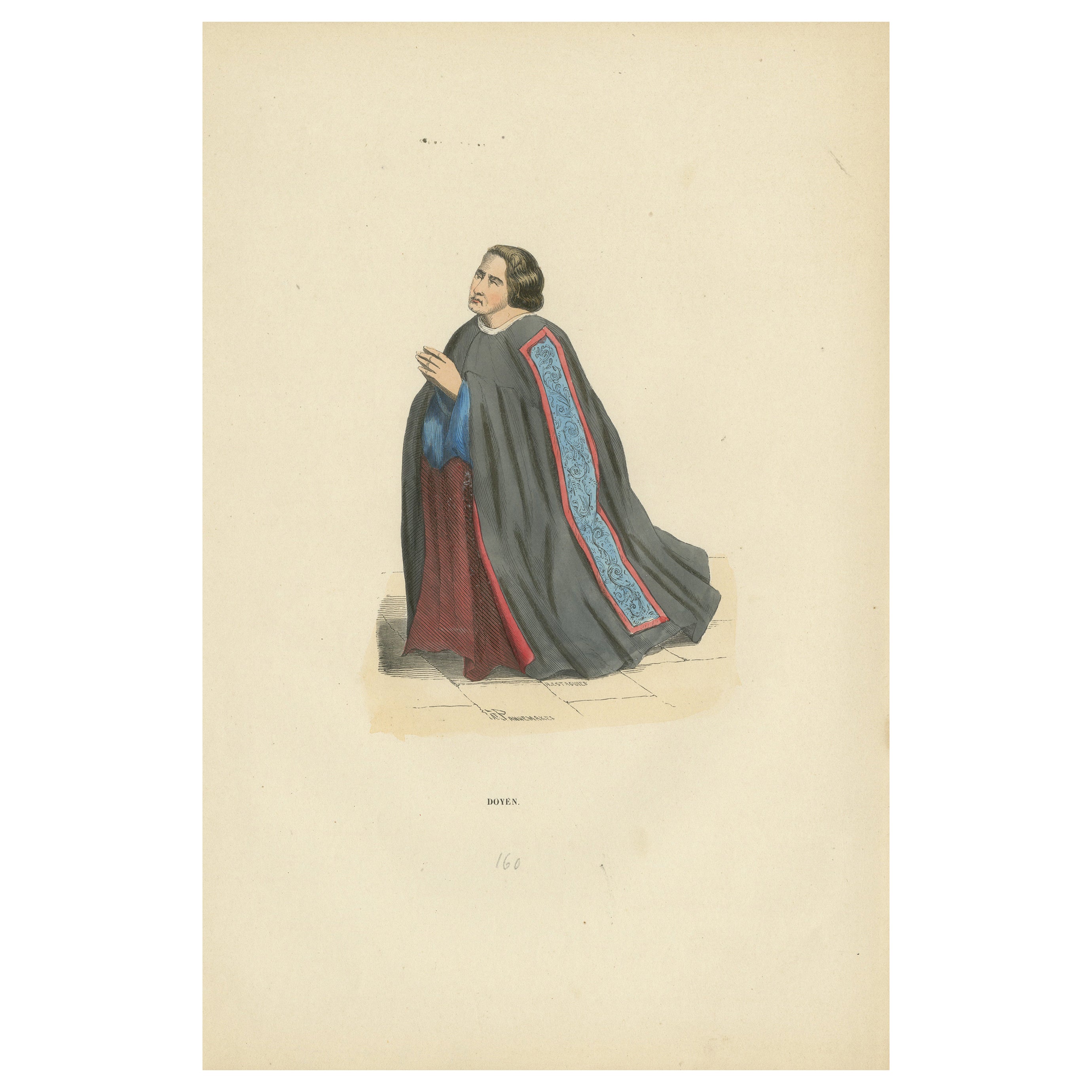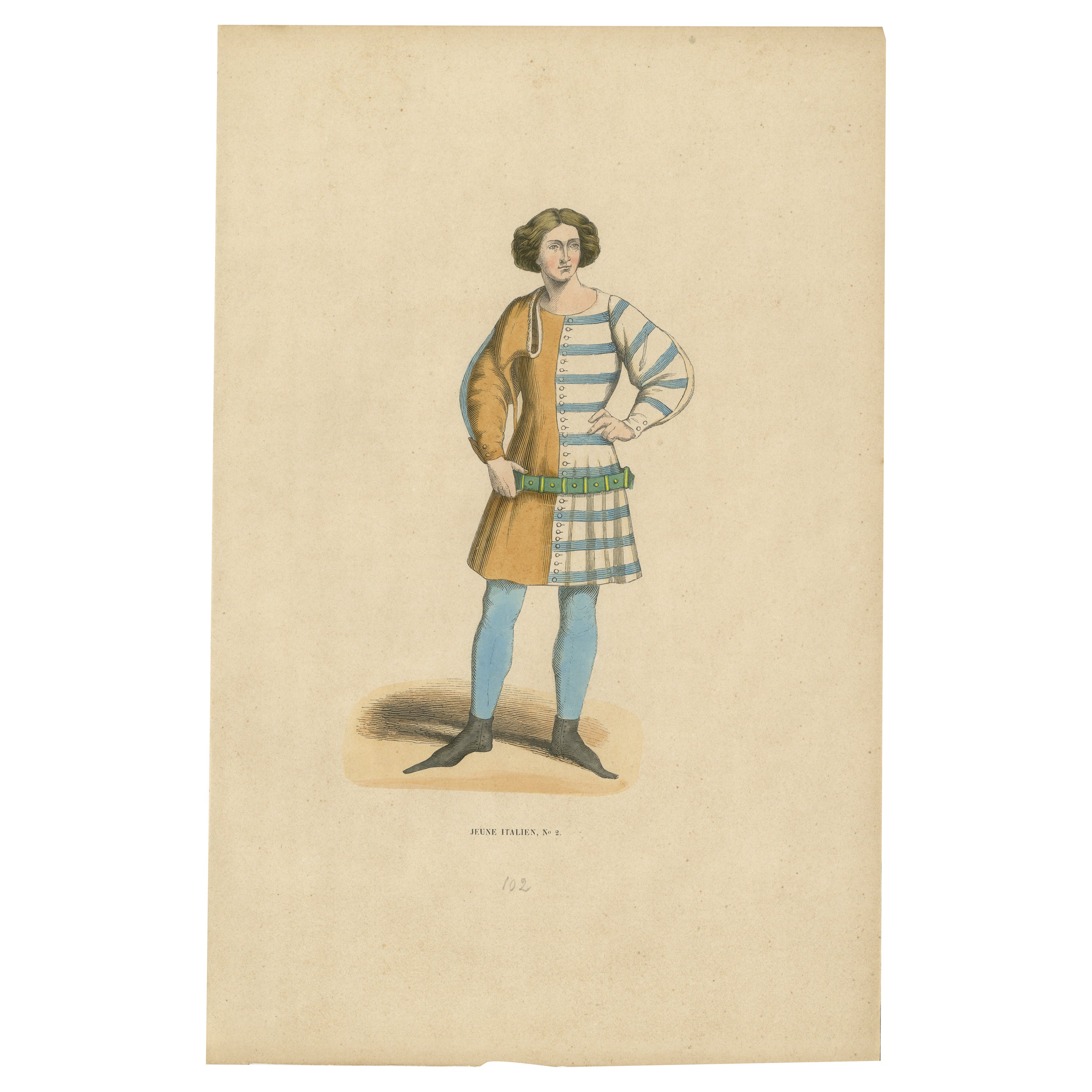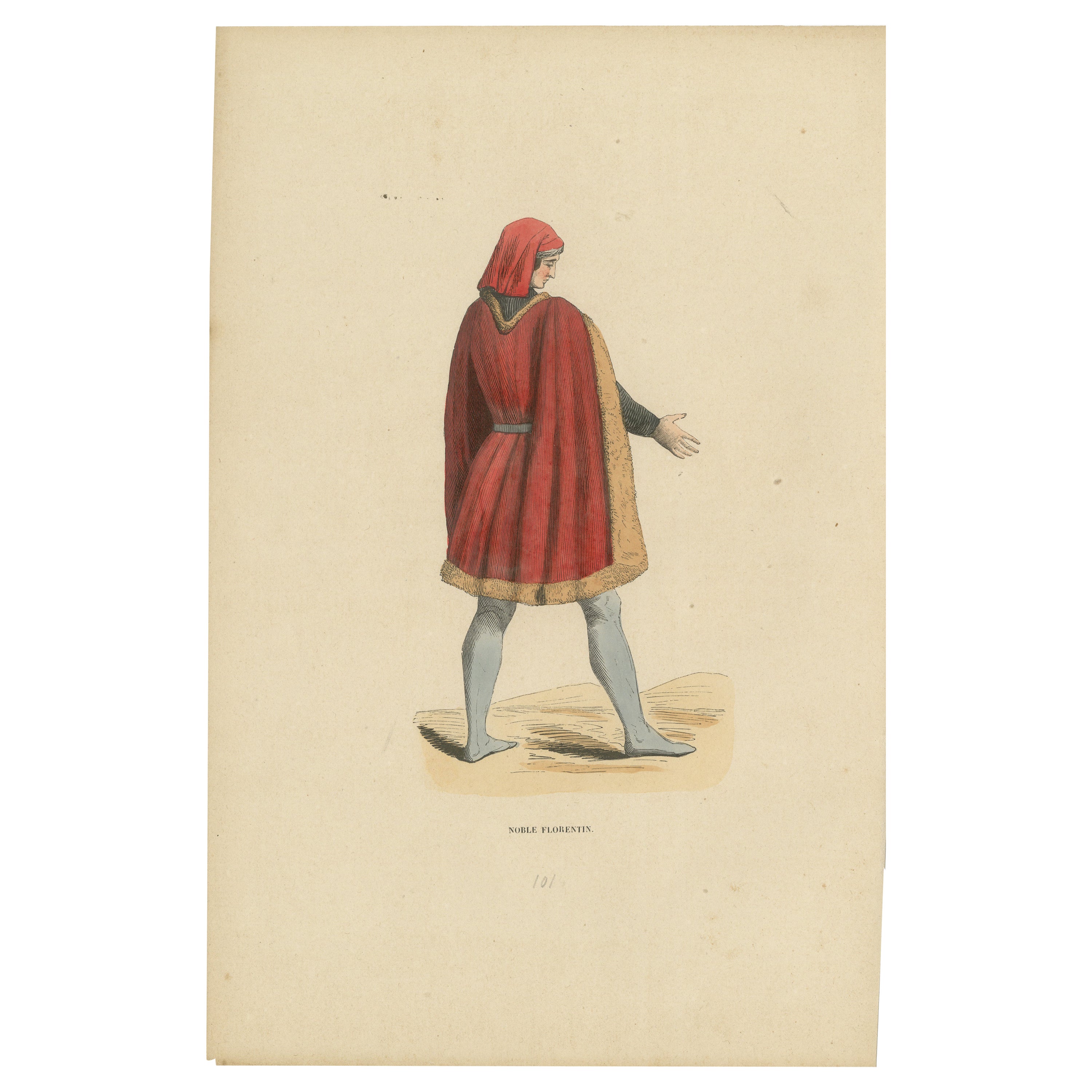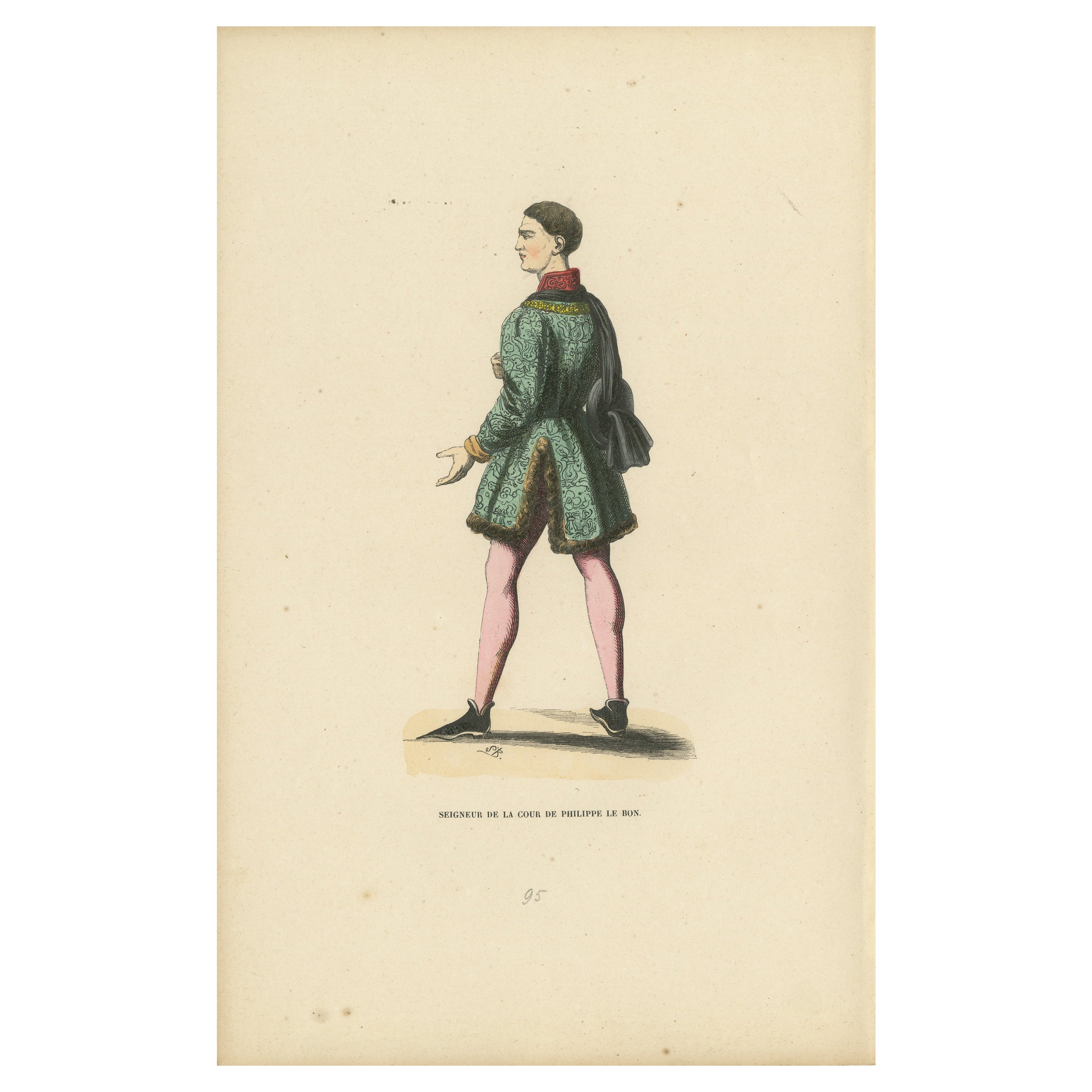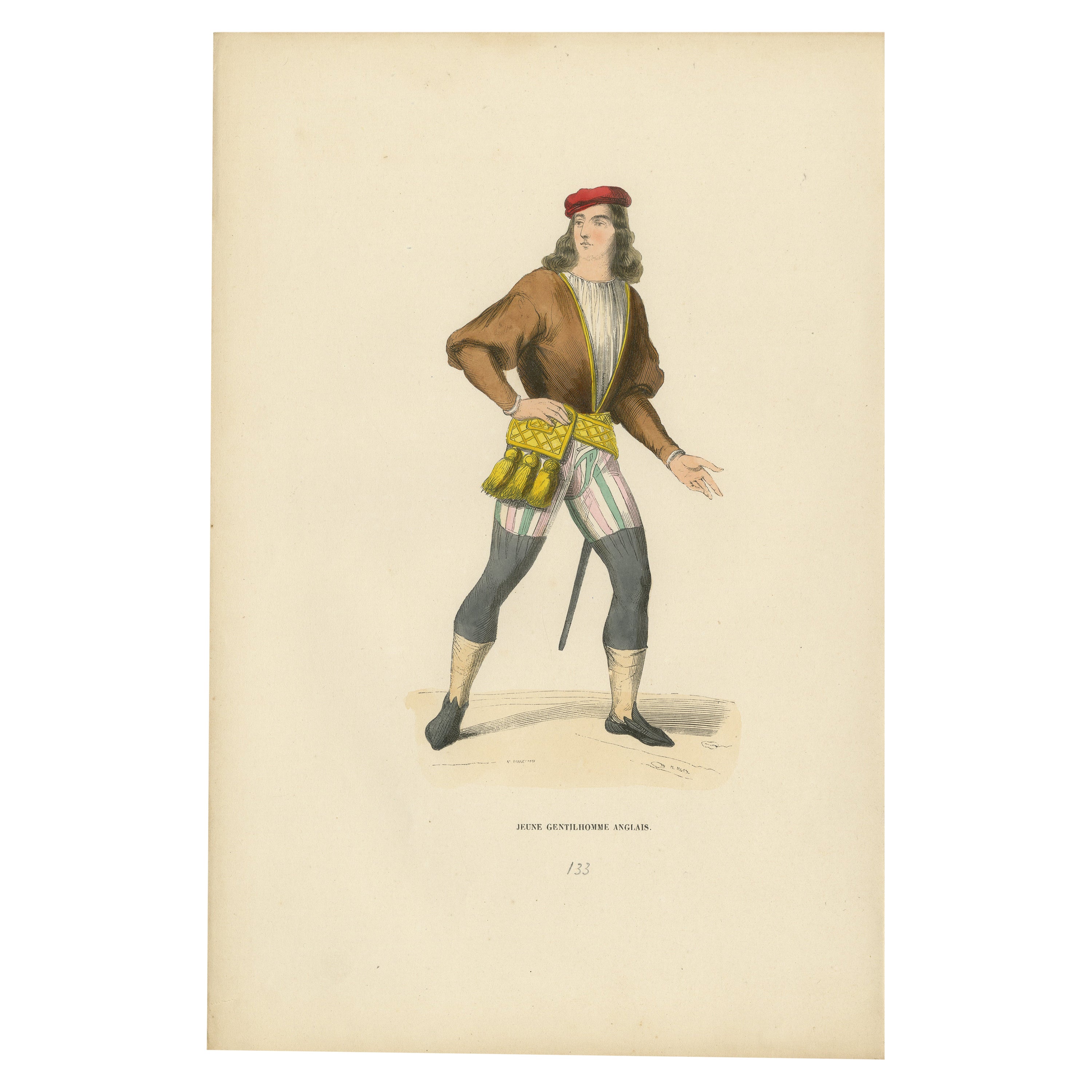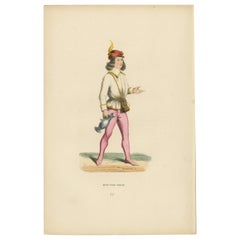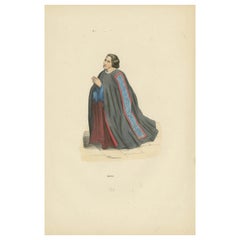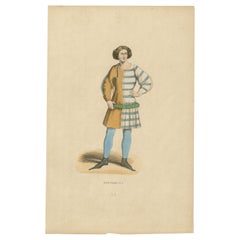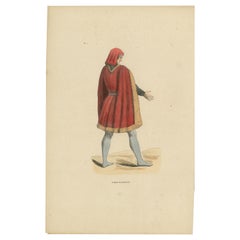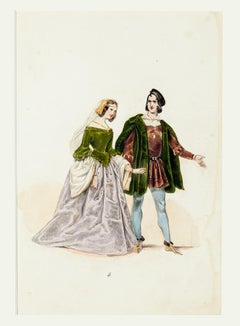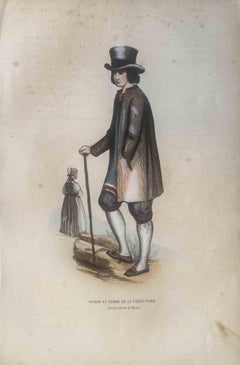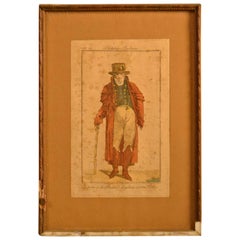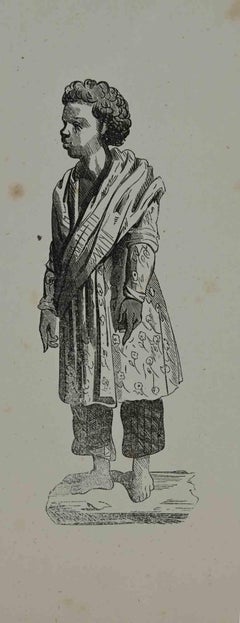Items Similar to Engraving of Medieval Bourgeois: A Portrait of Urban Sophistication, 1847
Want more images or videos?
Request additional images or videos from the seller
1 of 7
Engraving of Medieval Bourgeois: A Portrait of Urban Sophistication, 1847
$115.12
$143.9020% Off
£85.64
£107.0520% Off
€96
€12020% Off
CA$157.64
CA$197.0520% Off
A$175.27
A$219.0920% Off
CHF 91.52
CHF 114.4020% Off
MX$2,133.52
MX$2,666.9020% Off
NOK 1,167.74
NOK 1,459.6720% Off
SEK 1,094.12
SEK 1,367.6420% Off
DKK 730.79
DKK 913.4920% Off
Shipping
Retrieving quote...The 1stDibs Promise:
Authenticity Guarantee,
Money-Back Guarantee,
24-Hour Cancellation
About the Item
Title: "Medieval Bourgeois: A Portrait of Urban Sophistication"
Description: This print appears to depict a man of the bourgeoisie, the urban middle class, during the medieval period. The individual is portrayed in a stance that reflects confidence and self-assuredness, qualities befitting a prosperous member of medieval society.
He wears a simple yet elegant blue tunic with a red hem, the colors vibrant yet not overly ostentatious, suggesting a balance between wealth and modesty appropriate for a bourgeois. The tunic is belted at the waist, a practical element for a citizen who may be involved in trade or administration.
Over his tunic, he has a grey cloak that falls from his shoulders, indicative of the need for practical attire that could serve in various weather conditions. The cloak is fastened at the neck with a brooch, a small detail that suggests a certain level of prosperity and attention to fashion.
His black hose and shoes are typical of the period, practical for walking the cobbled streets of a medieval town. His hands are clasped before him, possibly holding gloves, an accessory that would denote status and sophistication.
The man's hair is cut in a style that is neat and frames his face, which bears a straightforward and earnest expression. He appears to be looking slightly to the side, as if engaged in observation or conversation.
This image captures the essence of the rising middle class during the medieval period—individuals who played a vital role in the economic and social fabric of urban life, balancing their emerging status with the traditional values of the time.
The colors have a nice glow over them. Historically, egg whites, known as glair, and sometimes egg yolk were indeed used in illumination and painting, particularly in manuscripts, to give colors a brighter appearance and to add a sheen or gloss to the work. This technique was quite common during the Middle Ages and into the Renaissance.
Egg whites can be applied as a varnish over pigments to enhance their brightness and to protect the colors. This application could make the colors appear more vivid and also add a slight glossy sheen to the surface of the image.
Egg yolk, on the other hand, was commonly used as a binding agent in paint. It forms the basis of tempera paint, a medium that was widely used before the advent of oil painting. Egg yolk helps to create a durable and long-lasting color that adheres well to various surfaces.
In the context of the print from 1847, it's less likely that egg whites or yolks were used directly on the print, as by that time, commercial printing processes would have been more advanced and less reliant on such manual methods. However, if this print is a representation of an earlier style or is meant to mimic the appearance of hand-painted manuscripts, the original artists might have employed techniques or materials that gave a similar effect to those achieved with egg-based binders and varnishes.
- Dimensions:Height: 10.63 in (27 cm)Width: 7.09 in (18 cm)Depth: 0 in (0.02 mm)
- Materials and Techniques:
- Period:
- Date of Manufacture:1847
- Condition:Good. Overal light toning and light soiling but the image itself clean and hand-colored almost 200 years ago and still in expliciet colors. Aged paper with typically warm, yellowish-brown hue, mostly around the edges. Study the image carefully.
- Seller Location:Langweer, NL
- Reference Number:Seller: BG-13635-501stDibs: LU3054337894922
About the Seller
5.0
Recognized Seller
These prestigious sellers are industry leaders and represent the highest echelon for item quality and design.
Platinum Seller
Premium sellers with a 4.7+ rating and 24-hour response times
Established in 2009
1stDibs seller since 2017
2,510 sales on 1stDibs
Typical response time: <1 hour
- ShippingRetrieving quote...Shipping from: Langweer, Netherlands
- Return Policy
Authenticity Guarantee
In the unlikely event there’s an issue with an item’s authenticity, contact us within 1 year for a full refund. DetailsMoney-Back Guarantee
If your item is not as described, is damaged in transit, or does not arrive, contact us within 7 days for a full refund. Details24-Hour Cancellation
You have a 24-hour grace period in which to reconsider your purchase, with no questions asked.Vetted Professional Sellers
Our world-class sellers must adhere to strict standards for service and quality, maintaining the integrity of our listings.Price-Match Guarantee
If you find that a seller listed the same item for a lower price elsewhere, we’ll match it.Trusted Global Delivery
Our best-in-class carrier network provides specialized shipping options worldwide, including custom delivery.More From This Seller
View AllThe English Squire: A Portrait of Service and Style, Original Engraving of 1847
Located in Langweer, NL
This antique hand-colored print originates from the same "Costume du Moyen Age" series from 1847 and depicts a young English squire, an attendant to a knight during the medieval peri...
Category
Antique 1840s Prints
Materials
Paper
$124 Sale Price
20% Off
The Revered Doyen: A Portrait of Venerable Leadership, Lithograph Published 1847
Located in Langweer, NL
This original antique lithograph for sale depicts a historical figure known as a "Doyen," which typically refers to the senior member of a body or group. This individual is portrayed...
Category
Antique 1840s Prints
Materials
Paper
$124 Sale Price
20% Off
Elegant Renaissance Italian Youth Fashion, Published and Hand-Colored in 1847
Located in Langweer, NL
Description: This original antique print, labeled "Jeune Italien, No. 2," which translates to "Italian Youth, No. 2," depicts a young man in what appears to be a Renaissance-period a...
Category
Antique 1840s Prints
Materials
Paper
$143 Sale Price
20% Off
Florentine Nobleman of the Middle Ages, 1847
Located in Langweer, NL
Title: "Civilian Costume at the End of the 15th Century"
Description: The image is a print from a series the "Costume du Moyen Age" dated 1847, and titled "Costume Civil de la Fin du XVe Siècle," which translates to "Civilian Costume at the End of the 15th Century." It showcases a man of status, possibly a noble or a wealthy burgher, standing in a poised and confident manner.
He is attired in an ornate cloak covered in a complex pattern of fleur-de-lis and cross motifs, indicative of wealth and possibly a connection to royalty or high social rank. The cloak is open at the front to reveal a blue doublet with a belt, and he wears red hose—a fashion staple of the late medieval period. His footwear is also red, which stands out against the more subdued tones of his outfit.
On his head, he sports a fur-trimmed hat, adding to the luxuriousness of his attire. In one hand, he holds a long staff, which serves as both a walking aid and a symbol of authority. His other hand rests on the hilt of a dagger, further indicating his readiness to defend his status or engage in the political or civic matters of his time.
The artist has skillfully rendered the textiles and accessories with great care, emphasizing the fashion and social cues of the late 15th-century European society.
The colors have a nice glow over them. Historically, egg whites, known as glair, and sometimes egg yolk were indeed used in illumination and painting, particularly in manuscripts, to give colors a brighter appearance and to add a sheen or gloss to the work. This technique was quite common during the Middle Ages...
Category
Antique 1840s Prints
Materials
Paper
$124 Sale Price
20% Off
Lord of the Court of Philip the Good, Engraved and Published in 1847
Located in Langweer, NL
The image presents a nobleman of the court of Philippe le Bon (Philip the Good), Duke of Burgundy. The nobleman stands in profile, gazing into the distance, with an air of contemplat...
Category
Antique 1840s Prints
Materials
Paper
$115 Sale Price
20% Off
Stylish Swagger: A Young English Gentleman in The Middle Ages, Published in 1847
Located in Langweer, NL
Title: "Stylish Swagger: A Young English Gentleman in 'Costume du Moyen Âge'"
Description: This lithograph from the 1847 publication "Costume du Moyen Âge" captures the confident st...
Category
Antique 1840s Prints
Materials
Paper
$153 Sale Price
20% Off
You May Also Like
Ancient Costume - Original Lithograph - Mid 19th Century
Located in Roma, IT
Ancient Costume is an original lithograph hand-colored, realized by an anonymous artist of the XIX century
The state of preservation of the artwork is...
Category
Mid-19th Century Figurative Prints
Materials
Lithograph
Uses and Customs - Grand Duche de Bade - Lithograph - 1862
Located in Roma, IT
Uses and Customs - Grand Duche de Bade is a lithograph on paper realized in 1862.
The artwork belongs to the Suite Uses and customs of all the peoples of the universe: " History of ...
Category
1860s Modern Figurative Prints
Materials
Lithograph
18th Century, Framed Fashion Engraving
Located in Vista, CA
18th Century framed fashion engraving. Gilding on frame is damaged (see picture).
Category
Antique 18th Century and Earlier French Drawings
Materials
Giltwood, Glass
Figure - Costumes - Lithograph - 1862
Located in Roma, IT
Figure - Costumes is a Hand-colored lithograph on paper realized in 1862.
The artwork belongs to the Suite Uses and customs of all the peoples of the universe: " History of the gove...
Category
1860s Modern Figurative Prints
Materials
Lithograph
Uses and Customs - Frise - Lithograph - 1862
Located in Roma, IT
Uses and Customs -Frise is a lithograph on paper realized in 1862.
The artwork belongs to the Suite Uses and customs of all the peoples of the universe: " History of the government,...
Category
1860s Modern Figurative Prints
Materials
Lithograph
18th Century Framed Fashion Engraving
Located in Vista, CA
18th century framed fashion engraving of a woman with a plume feather hat with fan and a walking stick.
Category
Antique 18th Century French Drawings
Materials
Glass, Paper, Wood
More Ways To Browse
Hand Painted Portrait Brooch
Antique Glass Powder Boxes
Antique Horse Wagon
Antique Hunting Accessories
Antique Hunting Pack
Antique Metal Rooster
Antique Metal Tea Pot
Antique Necessaire
Antique Pie Case
Antique Pill Box Gold
Antique Sake Set
Antique Silver Boxes Repousse
Antique Storm Glass
Antique Thimbles
Antique Victorian Grandfather Clock
Antique Wooden Swan
Art Deco Bed Frame Queen
Art Deco Buffet Mirror
